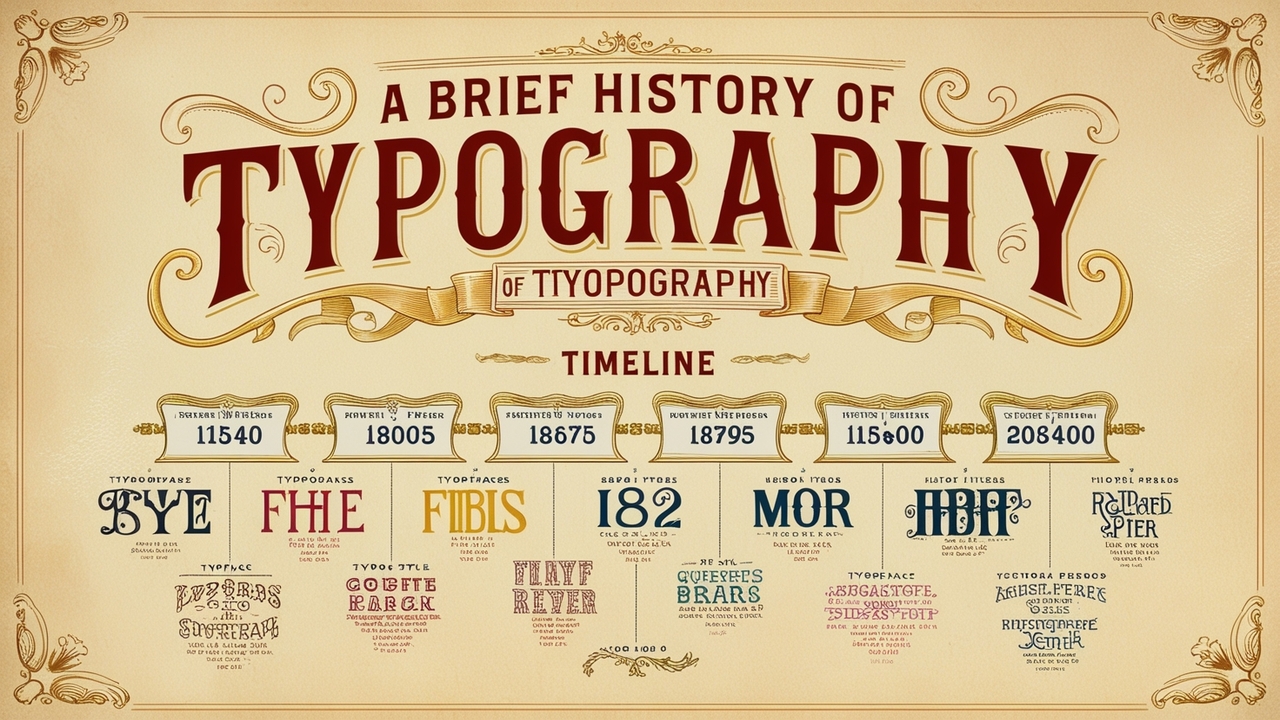Typography is the art and technique of arranging type. It plays an essential role in communication. From the early days of type design to the digital typography of today, typography has shaped how written content is presented and understood. Let’s take a closer look at the rich history of typography and its evolution.

A Brief History Of Typography
Typography dates back to the 15th century when Johannes Gutenberg introduced the movable type printing press. This revolutionized written communication, allowing for mass production of printed material. The first typefaces were old style serif fonts, inspired by classical handwriting and Roman type.
One of the earliest notable type designers was Nicolas Jenson, who created Roman type in the late 15th century. Aldus Manutius, another prominent figure, introduced italic type and developed new fonts for small printed books.
The 16th century brought Claude Garamond, whose elegant serif typeface became a model for later designs. His work set the foundation for serif fonts, which are still widely used today. The 17th century saw William Caslon, a British type designer, who created Caslon typefaces. His designs gained immense popularity and were used in the American Declaration of Independence.

The 18th And 19th Century Typography
In the 18th century, John Baskerville made significant strides in improving printing techniques. His Baskerville typeface, known for its clarity and contrast, remains a classic in modern typography. The 19th century was characterized by the rise of sans serif fonts, a departure from the ornate serif styles. These clean and minimal typefaces gained popularity with the advent of modern typography.
The Art Nouveau and Art Deco movements brought stylistic flair to typeface design, with intricate curves and geometric shapes defining the typographic trends of the time. Herbert Bayer and Neville Brody, two influential designers, contributed to these movements by experimenting with typefaces that reflected their respective eras.
The Evolution Of Digital Typography
The 20th century witnessed the birth of digital typography, driven by technological advancements in printing and web fonts. American Type Founders (ATF) played a critical role in the transition from metal type to digital fonts. Jan Tschichold revolutionized typographic design with his New Typography movement, emphasizing simplicity and functionality in layout and type.
The development of iconic fonts like Times New Roman, designed by Stanley Morison for the Times newspaper, became synonymous with modern printing. The rise of the internet in the late 20th century brought about web typography and the widespread use of variable fonts, which allowed designers to create more adaptable and responsive designs for the digital age.
The Role Of Good Typography Today
In the present day, typography has become more versatile. Designers use a variety of serif and sans serif typefaces in everything from web design to printed materials. Variable fonts and digital innovations have created new opportunities for creative expression while maintaining clarity and readability.
Good typography enhances the overall user experience, whether on websites or in printed material. Fonts like Goudy Old Style and Times New Roman remain timeless, while new typefaces continue to emerge, pushing the boundaries of design.
Conclusion
The history of typography is a testament to the evolution of communication and design. The craft has continuously adapted to new technologies and aesthetic trends, from the printing press to digital fonts. Typography continues to be a vital part of visual culture, influencing the way we read, write, and design.
Frequently Asked Questions
1.What Is The Oldest Typeface?
The oldest known typeface is Blackletter, also known as Gothic script, which originated in the 12th century.
2.Who Invented Serif Fonts?
Claude Garamond is one of the pioneers of serif fonts, creating elegant and readable typefaces in the 16th century.
3.How Did Digital Typography Change Design?
Digital typography revolutionized type design by enabling variable fonts and web typography, giving designers more flexibility in creating and adjusting typefaces for different media.
What Is The Difference Between Serif And Sans Serif Fonts?
Serif fonts have small decorative strokes at the ends of letters, while sans serif fonts do not. Serifs are often used in print, while sans serifs are popular in digital formats for their clean look.


Leave a Comment